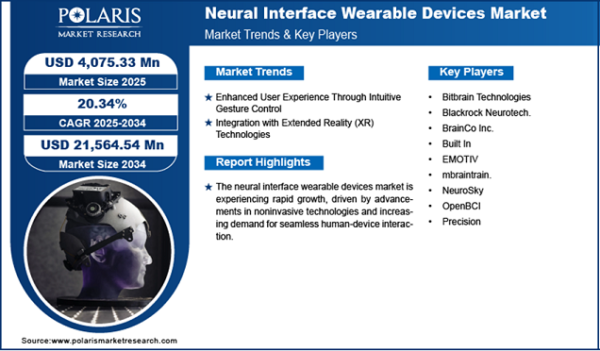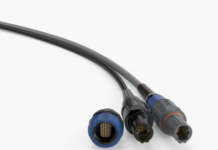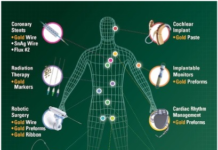
Neural interface wearables represent a fundamental evolution in the way people relate to technology. These devices deconstruct the electrochemical signaling from the brain and spinal cord for the purpose of producing outputs that transform the function as an operator and user in healthcare, consumer applications, industrial safety, gaming, and neurocognitive monitoring. As use cases expand and investment from major technology companies, medical technology manufacturers, and research institutions continues, the market for neural interface wearables has transitioned to a phase of rapid innovation and early commercialization.
What are Neural Interface Wearable Devices?
Neural interface wearables are devices that monitor, decode, and leverage information from brain or neuromuscular signals that are gathered via sensors in a non-invasive manner. The latter commonly utilize EEG, or electromagnetic signals via multi-channel surface electrodes, to measure cognitive, stress, attention, muscle responses, and neural health through biosignal detection and processing. With the advancements in signal processing using AI and ML, the monitored activity is then turned into meaningful insights or control commands that can send outputs to a software application, assistive devices, games, or AR/VR systems. Either in the form of a headband headset, ear-based, neural patch, or AR/VR utilizing the device as sensors, the portability and usability of these devices are more conducive to real-world application rather than a clinical setting.
What Are Key Market Stats?
The neural interface wearable devices market stood at USD 3,400.26 million in 2024. The market is expected to reach USD 21,564.54 million by 2034, at a CAGR of 20.34% from 2025 to 2034.
Key Applications of Neural Interface Wearable Devices
Healthcare and Rehabilitation
Neural wearables are proving powerful in neurorehabilitation, helping patients regain motor function after stroke or neurological disorders. Detection of brain activity patterns serves to personalize therapy, muscle reactivation, and cognitive assessment. They increasingly monitor mental health indicators such as stress, sleep quality, and even emotional states, enabling early intervention and remote care models.
Human-Machine Interaction and Control
BCI-enabled wearables are expanding the way augmented reality/virtual reality headsets, smart home devices, prosthetics, and robotics can be controlled using no gestures or voice. Capturing neural intent or micro-muscular signals from users enables faster and more intuitive interactions with digital systems. This capability is highly valuable in high-tech industries, assistive mobility, defense operations, and immersive entertainment.
Gaming, Immersive Media, and AR/VR
Neural wearables will further enhance gaming and AR/VR by adding real-time cognitive input that shapes gameplay, adjusts environments, or creates personalized experiences. It opens another dimension of interaction beyond controllers and offers deeper immersion with more adaptive environments, attuned to the user’s mental state.
Industrial Safety and Performance Monitoring
Neural interfaces in high-risk or productivity-driven working environments are supporting the monitoring of fatigue, alertness, and cognitive load. Enterprises are adopting this solution to ensure worker safety, reduce accidents, and enhance performance in sectors like manufacturing, logistics, and transportation.
Market Drivers
Growing Emphasis on Mental Health and Cognitive Wellness
This has created an increasing demand for neural wearables, which can enable the real-time monitoring of one’s mental state amidst the growing amount of stress, burnout, and problems with cognitive health. Neural wearables are supportive, providing data-driven insights for personal wellness, workplace stress management, and preventive care.
Advances in Neuroscience, AI, and Sensor Technology
Improved signal accuracy, noise reduction algorithms, and compact electrode designs are making neural wearables both more reliable and user-friendly. AI advances offer faster interpretation of the brain signals, paving the way for broad consumer adoption.
Expanding Use in Healthcare and Assistive Technologies
Clinicians increasingly employ neural interfaces for stroke recovery, speech detection in paralyzed patients, and neurodiagnostics. Non-invasive wearables reduce the cost and complexity that is usually associated with brain interface technologies and make access to care easier.
Trends Shaping Market Landscape
Shift to Non-Invasive, User-Friendly Designs
Dry electrode systems, ear-based sensors, and flexible neural patches introduce unobtrusive form factors that will make neural wearables more practical to wear in everyday applications.
Smart Device & IoT Ecosystems Integration
Neural wearables increasingly provide support for integrating smartphones, smart home devices, fitness platforms, and enterprise analytics systems into a single data environment.
Ethical and Privacy-Centric Design Approaches
As neural data is increasingly sensitive, manufacturers have been more transparent about their practices regarding data security, user consent, anonymization, and guidelines on ethical usage.
Conclusion
The neural interface wearable devices market is setting a new future in the way people interact with technology, merging neuroscience, AI, and consumer electronics into a powerful new category of smart wearables. From healthcare rehabilitation and mental wellness to gaming, industrial safety, and gesture-free control systems, neural wearables unlock a wide spectrum of possibilities for individuals and enterprises alike. As sensor technology advances rapidly, along with the capabilities of signal processing and better ergonomic design, neural interface wearables continue their transformation from niche innovations toward mainstream tools.

















